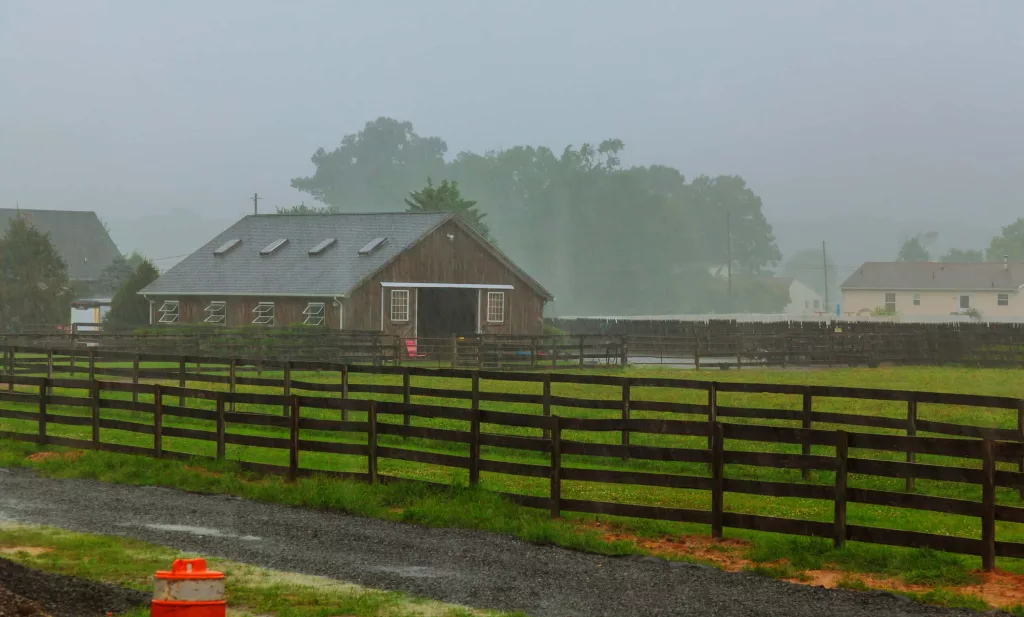(Please note that in an earlier version of this story, we were provided faulty data regarding the total rainfall amounts in the region in recent months. Here is what Mark Longstroth said in response to a challenge to the data as seen in a Facebook post: I am sorry to admit that the rainfall sensor at the Scottdale weather station has a problem. I didn’t remember that when I sent the link to Patrick M. Moody. I should have sent the Berrien Springs link, with a more believable 15.5 inches. Areas in SW Michigan have received about twice their normal rainfall and flooding is common https://enviroweather.msu.edu/run.php?stn=brs&mod=w_ry…
We’ve all watched in shock and awe as the seemingly never-ending rain just keeps pummeling the region. Social media sources are filled with images and exclamations over localized flooding, basements filled with water, roof collapses, foundation failures and more. Just how dramatic the rainfall amounts have been might really amaze you.
I reached out to Mark Longstroth, Fruit Educator for Michigan State University Extension, to determine the impact on the agricultural community this spring. Longstroth’s Historical Rainfall Summary for the growing season over the past five years from April 1st each year to June 23rd now show that 2018 has already logged rainfall at least two times higher than the normal pattern.
The average rainfall total in that time span from 2013 to 2017 was 8.34-inches. This year it is a substantial 15.5 inches. Even the heaviest rain year in the past five only filled the pluviometer (fancy talk for rain gauge) to 9.29-inches in 2015.
The average over the past five years reflects 132.6 hours recorded with rainfall, while the same cycle this year has produced 589 hours recorded with rainfall. Here’s his chart: (Note: this was the originally posted chart with the faulty data…please click the link above for the correct data.)
Historical Rainfall Summary from 4/1/2018 to 6/22/2018 (Report issued 6/22/2018 14:52)
Rainfall sensors are unreliable for frozen precipitation; cumulative totals may be affected.
| Year | Rainfall total (in.) | Hours with rainfall | Dates evaluated |
| 2018 | 55.46 | 589 | Data from 4/1 through 6/22/2018 2PM. No missing rainfall data in this evaluation period. Contains 3 hour(s) of estimated data. |
| 2017 | 7.11 | 135 | Data from 4/1 through 6/23/2017 12AM. No missing rainfall data in this evaluation period. |
| 2016 | 8.42 | 135 | Data from 4/1 through 6/23/2016 12AM. No missing rainfall data in this evaluation period. Contains 1 hour(s) of estimated data. |
| 2015 | 9.29 | 131 | Data from 4/1 through 6/23/2015 12AM. No missing rainfall data in this evaluation period. |
| 2014 | 7.98 | 132 | Data from 4/1 through 6/23/2014 12AM. No missing rainfall data in this evaluation period. |
| 2013 | 8.89 | 130 | Data from 4/1 through 6/23/2013 12AM. Missing rainfall data for: 4/6 8-9PM-4/9 6-7PM (71 hours) |
| Average of 5 years, not including current year | 8.34 | 132.6 | 5 years with > 90% of data. |
Longstroth says what impact the rain has had is highly dependent on location. He tells me, “For crops where the plant is underwater, they will drown and die.” He points out, “Generally two days is all it takes and anything more than eight hours underwater has permanent effects.”
On the bright side, Mark says, “Plants that are not flooded are loving it, especially if they are on sand which drains well. Heavier soils full of water stunts the plants because the roots need air to breathe.” He notes, “It has been so wet that many of the fields have wet spots where the plants have died, and it’s too late to replant.”
Longstroth’s colleague, Ron Goldy says, “For some of the annual crops, the wet spots were identified by earlier spring rains and those spots just didn’t get planted, however, those spots are now larger with the rain over the past few days.” He adds, “The other thing that will happen is that much of the early fertilizer applications will not be as effective as desired, since much will have leached away.” Goldy adds, “Heavy rains at this time of the year also gets early disease infections off to a good start, so we may be looking at a heavy disease year for many crops.” He points out that wheat would be a concern right now since it is starting to mature. Additionally, tomato early blight and downy mildew may also become a greater concern. Longstroth concurs, “Yes, lots of diseases with the wet spring.”
The Michigan State University Extension team says for growers with crop insurance, “They can get payment for this,” (Underwater crops that drown and die.) On the other hand, Longstroth cautions, “There is nothing for those without crop insurance inasmuch as the USDA has moved away from disaster payments to insurance.”
Farmers, growers, winemakers and the entire agri-business community is closely monitoring conditions all across the region with still more flood warnings, and rainfall in the forecast although the heaviest shower patterns have finally moved on for this round.
Stay tuned.






